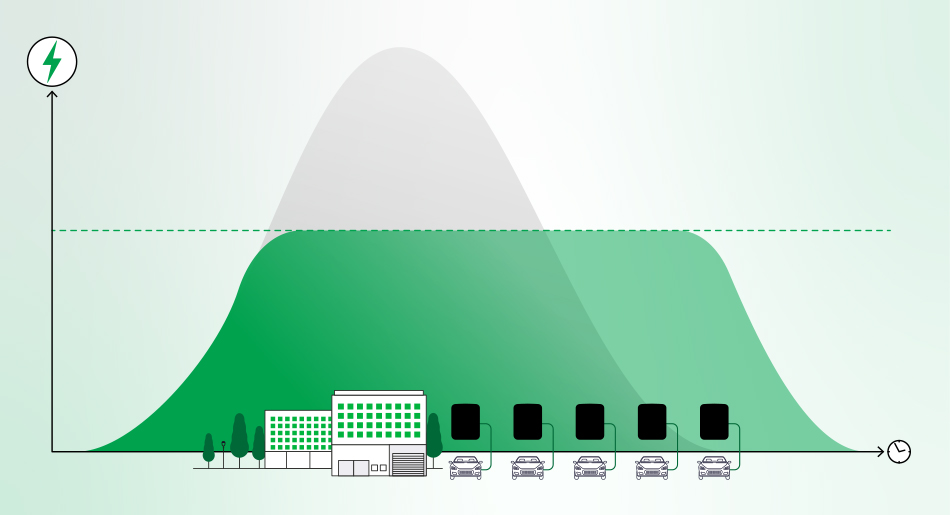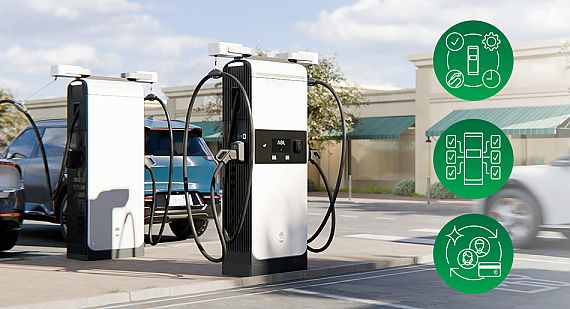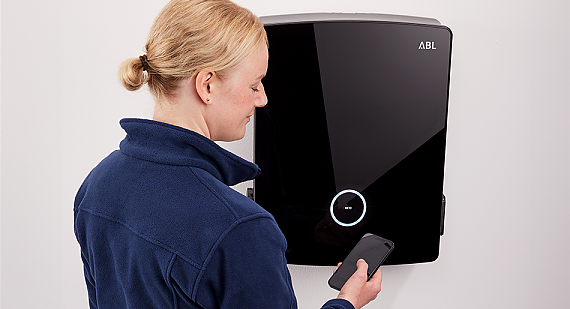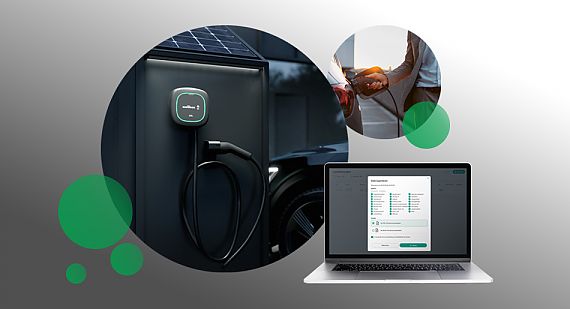Theresa Lorsch
18. December 2024

Load management - what is it and why is investing worthwhile?
Utilising electricity capacity effectively: questions and answers
Cooker, tumble dryer, heat pump. If many appliances with high energy consumption are used at a time within a household, there is a risk of overloading the mains. If a certain charging power is also required for charging one or more electric cars, this can cause problems with the grid connection. Whether in a private household or in a company - load management can help and manage charging processes sensibly.
What is load management?
A load management (demand-side management) is used to protect a building's domestic connection. The total power consumption is adjusted and controlled in such a way that no expansion of the grid connection is necessary and the maximum power available in the house connection (so-called grid connection capacity) is not exceeded. Intelligent load management in a smart home system controls the electricity consumption of various electrical appliances (e.g. heat pump, stationary battery storage) in such a way that grid overloads and peak loads are prevented. Users also save money: on the one hand, the costs for expanding the grid connection are reduced and, on the other, lower grid fees are incurred. Costs can also be reduced in daily use: For example, if the power consumption of a consumer is shifted with the help of a smart meter to a period in which the electricity price is particularly low (so-called load shifting). Consumers can also be supplied with surplus electricity from a PV system or a stationary electricity storage unit, thus avoiding peak loads (peak shaving).
Load management and charging electric car(s) - what are the advantages?
If a charging station or charging group is involved, the total energy requirement of a building is made up of the electricity consumption of the house connection (base load) and the energy required for the charging station or charging park. Depending on the type of load management, the total charging current is a fixed or a flexible value. The advantages are that load management contributes to general grid stability, users benefit from cost savings and climate-neutral electricity generated directly in the household can be used to operate the charging stations. Depending on the system, the charging current and building load can be monitored in a web interface or an app.
Static and dynamic load management - what's the difference?
Load management in a charging group with several charging points can be static or dynamic:
Static load management

With static load management, a fixed value is set for the maximum power of the charging group. Based on this preset value, the charging current is distributed dynamically to all active charging points. The specified energy value is independent of the energy consumption of the house connection. If the base load is low, the energy value of the charging group is not adjusted. Static load management can be realised in a Wallbox eM4 Controller-Extender group installation, for example. The communication and control unit for static load management is installed in the controller wallbox. The Wallbox ABL Pulsar also enables static load management.
*Load management possible with Wallbox eM4 Twin, Wallbox eM4 Single or Wallbox ABL Pulsar
Dynamic load management

Dynamic load management monitors the current electricity consumption of the house connection. The charging points are always supplied with the maximum possible energy, as the energy for the charging park is based on the power consumption in the house connection. This optimises the charging speed. Dynamic load management can be realised with Wallboxes eM4 using the ABL Energy Meter or a compatible system type.
*Load management possible with Wallbox eM4 Twin, Wallbox eM4 Single or Wallbox ABL Pulsar
Who can benefit from load management?
(Dynamic) load management is always worthwhile when excessive overall electricity consumption would require the expansion of grid capacity. This is particularly the case in the private sector when large consumers get in each other's way in a household or when several electric cars need to be charged. Dynamic load management is also required in apartment buildings in which, for example, a charging group with several charging points is installed in an underground car park. Load management also makes sense for companies that want to electrify their vehicle fleet.
Submit comment
Relevant articles
YTo0OntpOjA7aTo1MjE2O2k6MTtpOjUxOTk7aToyO2k6NTE4MDtpOjM7aTo1MDMzO30=
94
czo1OiIzNCwzNSI7



